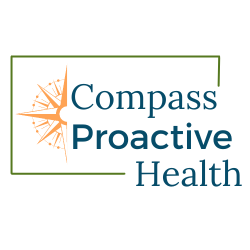Guidelines For Fitness
When looking to start a physical fitness program it can be daunting to try and find any recommendations on where to get started. You could always fall back to ol’ classic weightlifting routine of the 3 sets x 5 reps workout for getting jacked. Or to get even more jacked, jump right into a work out volume of 5 sets x 5 reps, 5 days a week, because more is always better, right? This is very from from the truth. The most important thing to know going into any work out is SPECIFICITY is king. Know what you need to work on, most importantly, where your deficits are at, and make it strong.
Contrary to popular belief just doing a “work out” does not mean you are doing the healthiest thing for your body. There are many factors that make up a successful work out. And if you are new to implementing a training program, I highly recommend working with a personal trainer and someone well versed in functional assessments just to get your bearings on where to start.
—————
What we are looking at here is, what are the most basic guidelines to even start a work out program? The first thing we want to look at is how physical activity is defined. According to the U.S. Department of Health and Services, 2018. Physical Activity Guidelines For Americans (2nd ed.),
If you do nothing beyond baseline activity (that’s just sleeping, eating, and binge watching Netflix), you’re INACTIVE.
If you bust out of baseline and add in a total of 150 minutes/wk, you are INSUFFICIENTLY ACTIVE.
Clocking in 150-300 minutes/wk gets you a solid ACTIVE rating.
And >300 minutes/wk labels you as HIGHLY ACTIVE.
So we’ve got a baseline understanding of how much time we should be investing in our physical activity. So let’s narrow it down based on specific goals.
Aerobics
Frequency and Intensity: 5 days a week (moderate) - 3 days a week (vigorous) or 3-5 days of mixed intensity.
Time and Type: 30-60 minutes/day of moderate continuous, rhythmic movement or 20-60 m/d of vigorous and/or a mixture of intensities.
Pattern and Progression: Perform in one continuous session, one interval session, or in multiple sessions ≥10 minutes to get the volume. Start slow, go slow and change duration, frequency, and/or intensity to change the challenge.
Resistance
Frequency and Intensity: Each major muscle group 2-3 days/wk. 60-70% 1-RM (mod to vigorous intensity) for novice to intermediate for improved strength. Experienced trainers - ≥80% 1-RM; vigorous to very vigorous for improved strength.
40-50% 1-RM (very light to light intensity) for older individuals beginning to strength train.
≥ 50%1-RM (light to moderate) to improve strength endurance.
20-50% 1-Rm in older adults to improve power.
Time and Type: 45-60 minutes per session, targeting multi joint exercises the hit agonist and antagonist muscle groups.
Repetitions and Sets: 8-12 reps to improve strength and power; 15-25 to improve muscular endurance. 2-4 sets generally speaking; ≤ 2 sets improves muscular endurance.
Pattern and Progression: Rest intervals of 2-3 minutes between sets; Rest period of ≥ 48 hours between any single session. Gradually progress resistance, repetitions, and are/or frequency.
Flexibility
Frequency and Intensity: ≥ 2-3 days/wk with daily being most effective. Stretch to the point of slight discomfort.
Time and Type: Static stretch for up to 2 minutes; Progressive and Regressive Angular Loading, 15 second progressively loaded tissue (between 10-80% intensity depending on tissue and sensitivity), with regressively loaded tissue (100%) max contraction for 5 seconds.
Volume and Pattern: 2 (≥60-90% load) - 4 (≥20-50% load) rounds depending on intensity.
Progression: Move into range as tissue allows in pain free ranges.
Neuromotor
Frequency and. Intensity: ≥2-3 days/wk; keep it challenging and safe.
Time and Type: ≥20-30 minutes/day may be needed; balance, agility, coordination, and gait.
Volume, Pattern and Progression: Unknown
Source: American College of Sports Medicine (2018). A CSM’s Guidelines for Exercise Testing and Prescription (10th ed.) Except Flexibility - Source : FRS systems
Taking this into consideration as a guide, we can identify certain aspects to bring into a workout program that fits our goals. But as I said before, SPECIFICITY is what we want to focus on. Working with a personal trainer and health coach can help you narrow down your goals and help you determine which programming will get you the results you’re looking for in your training.
